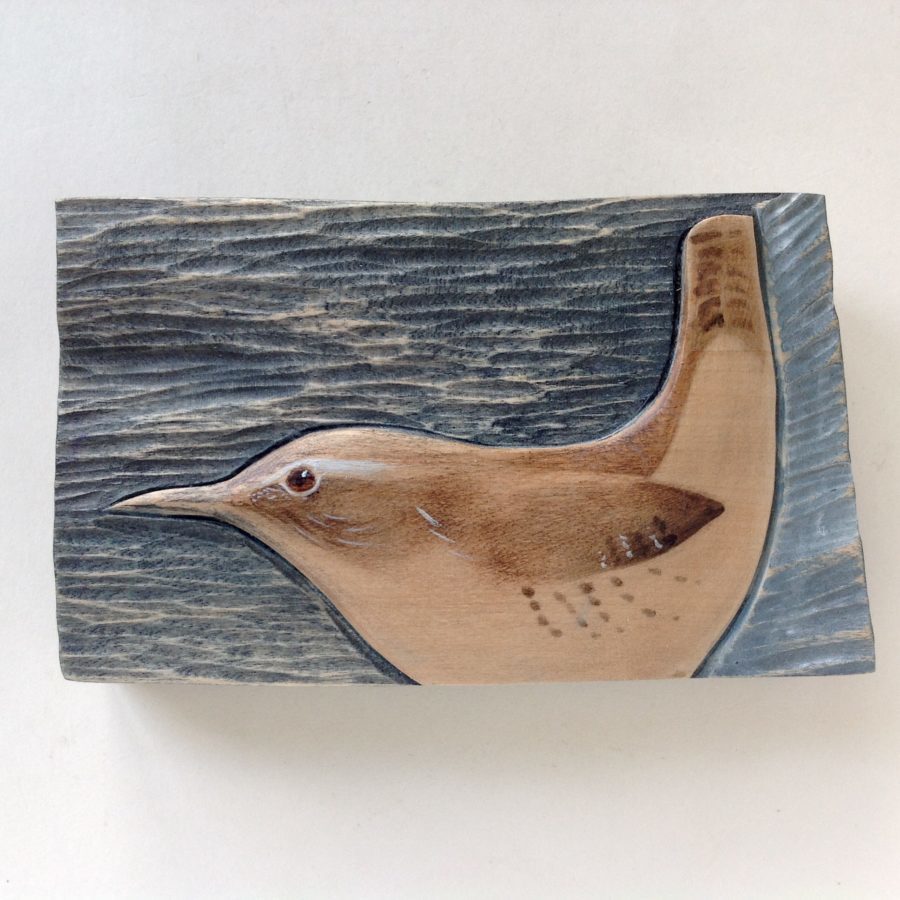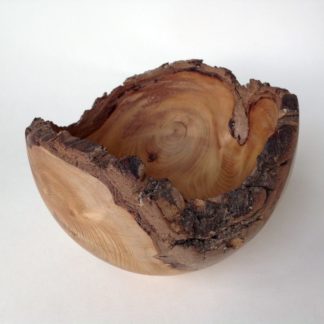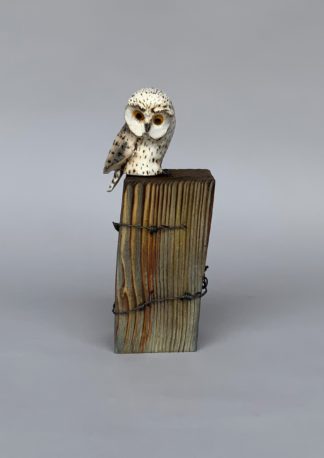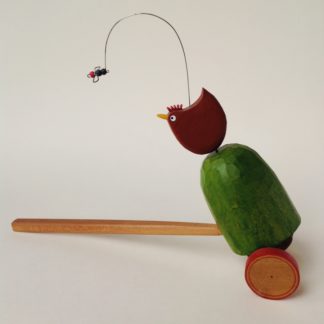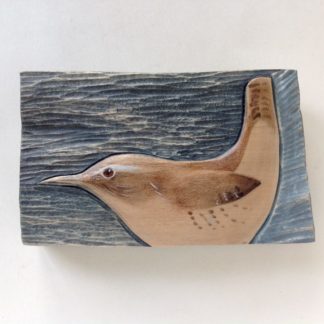Description
‘Wren’
Relief Wood Carving
Collect from gallery £64
Including UK delivery £74
L 11.5 x H 7 x D 2.5 cm
Showing in our Summer Exhibition 2024
‘Sunlight on the Garden’ opening on Saturday 6th July
Kathryn has been making woodcarvings for over 30 years, initially three-dimensional and then moving on to the relief carvings she makes today. This change came from a love of drawing, where she enjoyed exploring composition, colour and texture, using the gouges and chisels as well as paint.
Birds have always fascinated her, there were bird watching books on her childhood bookshelves and they’re still on her shelves today. Kathryn only needs to look out of hershed window when working and her inspiration is flying past, circling overhead or resting on the woodshed.
Wood, specifically English lime, is her chosen medium. Transforming a rough cut plank into a finished piece is a methodical, almost meditative process and incredibly satisfying.
Painting can often take even longer than the carving, where paint is applied, sanded and re-applied until she is happy with each piece.
“I’m never entirely sure what I want to make until it is made. The initial idea may be : species of bird, its’ landscape, a colour and the resulting carving develops organically from there.
Knowing when a piece is finished is pure instinct. Sometimes I can overwork a carving and then I need to re-carve it and re-colour it until I can look at it and say “Yes, that’s better”. Then I’m happy.”
